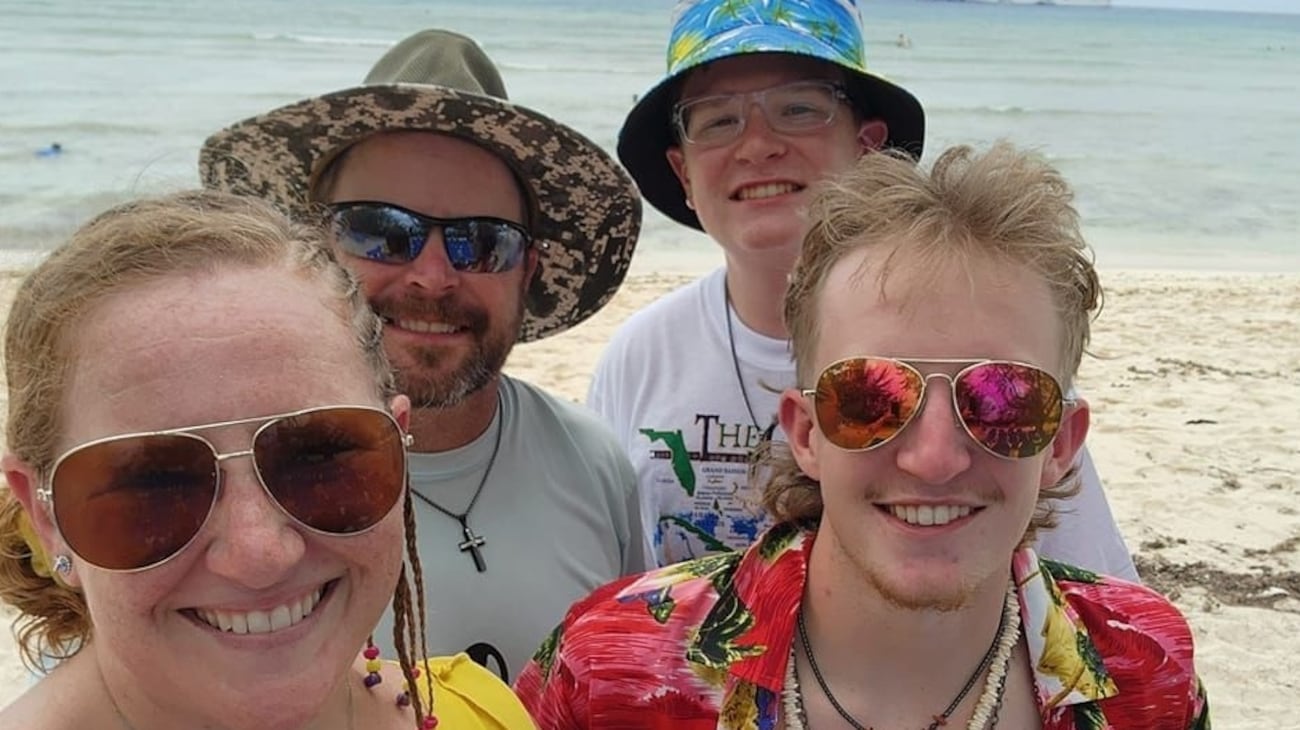
Heartbreak in Dawson County: Family of Four Lost in Tragic Incident on Graduation Day
A heart-wrenching tragedy has shaken the town of Cozad in Dawson County, Nebraska, where a family of four was found dead in their home on May 10.
The devastating discovery occurred on what should have been a celebratory milestone—the high school graduation of the family’s eldest son. Instead, the community is mourning the loss of an entire household in what authorities believe to be a murder-suicide driven by long-term mental health struggles.
According to the Nebraska State Patrol, 42-year-old Jeremy Koch is suspected of fatally stabbing his wife, Bailey Koch (41), and their two sons—Hudson (18) and Asher (16)—before ending his own life. Law enforcement officers, responding to a call at approximately 9:45 a.m., found the four deceased inside the residence. A knife believed to be the weapon was located at the scene.
The unimaginable loss cast a somber shadow over the Cozad High School graduation ceremony that same day. Superintendent Dan Endorf addressed the students and their families with heartfelt words, acknowledging the painful contrast of emotions felt throughout the gymnasium.

“Our senior class and entire community are mourning a profound loss today,” he shared. “Though grief weighs heavily on us all, especially on such a significant day, we must come together to honor the hard work and achievements of our graduates. Let us hold onto our strength and support one another.”
Following the incident, Bailey’s parents, Lane and Peg Kugler, took to social media to express their sorrow and speak candidly about the long and difficult mental health journey their son-in-law had endured. According to the family, Jeremy Koch’s struggles with severe mental illness began around 2009 and included multiple suicide attempts over the years. By 2015, Bailey and her family were publicly sharing their experience in an effort to raise awareness and help others navigate similar hardships.
Bailey was actively involved in mental health advocacy, contributing articles to parenting platforms like Her View From Home and maintaining a Facebook page focused on educating others about mental illness. In a post written shortly before the tragedy, she described Jeremy as becoming increasingly unwell after ending electroconvulsive therapy earlier this year.
She also recounted a chilling moment from March, when she awoke to find Jeremy standing over her with a knife, uttering the words, “Something is wrong.” Despite her fear, Bailey was able to de-escalate the situation and encouraged him to seek medical intervention.
Just days before the tragedy, on May 3, Jeremy reportedly survived multiple suicide attempts. Bailey’s last public posts painted a heartbreaking picture of a family fighting a losing battle against an invisible force.
“Mental illness is robbing me of my husband,” she had written. “Please, I’m asking everyone to take this crisis seriously before more families are torn apart.”
Autopsies have been ordered for all four family members, and the Nebraska State Patrol continues to lead the investigation.
A Wake-Up Call for Mental Health Awareness
This sorrowful incident serves as a sobering reminder of the ongoing mental health crisis affecting countless families. It highlights the often-invisible struggles individuals face and the critical need for accessible, compassionate, and effective mental health care. The community of Cozad is now left grappling with profound grief, but also a shared sense of urgency—to recognize, support, and advocate for those battling mental illness before more lives are lost.
As the investigation unfolds, one thing remains painfully clear: the tragic loss of the Koch family should be a catalyst for change. It’s a call to action for society to listen more closely, intervene more swiftly, and build a stronger system of mental health support—because behind every silent battle is a family hoping for healing.
“7.7-Magnitude Quake Shakes Southeast Asia: How Residents Faced the Unexpected”
Devastating 7.7-Magnitude Earthquake Shakes China-Myanmar Border: Communities Rally Amidst Chaos
Early Monday morning, the earth violently shook beneath the China-Myanmar border, unleashing a powerful 7.7-magnitude earthquake that left buildings trembling and families fleeing into the streets.
Officials quickly identified this as one of the most intense seismic events in Southeast Asia in recent decades, while locals recounted terrifying moments when the ground seemed to split apart beneath them.

A Shallow, Powerful Tremor
The United States Geological Survey (USGS) reported the quake’s epicenter was located just 10 kilometers underground—a shallow depth that amplified the destruction by allowing seismic waves to reach the surface with devastating force.
The tremor’s impact rippled far beyond the epicenter, shaking regions in southern China, northern Myanmar, and even parts of Thailand and Laos.
Witnesses described the experience in starkly different ways: some felt the earth roll like waves, while others experienced sharp jolts that rattled windows and crumbled walls. The variation reflected local geology, terrain, and building structures, revealing the unpredictable nature of such seismic events.
Widespread Disruptions and Emergency Measures
In the quake’s immediate aftermath, power outages struck several towns near the epicenter, and landslides blocked critical mountain roads.
Utility crews raced to restore electricity and assess damage, while transportation hubs in northern Thailand temporarily suspended operations to conduct safety inspections.
Mobile networks became overloaded as residents desperately tried to contact loved ones, turning social media into a vital lifeline for sharing updates and seeking help.
Communities Find Strength in Unity
Amid the chaos and fear, people showed remarkable resilience. Families gathered in safe open spaces, and community centers and schools quickly transformed into shelters, offering essentials and comfort to those too frightened to return home.
Social media buzzed with videos capturing the quake’s raw power—from swinging lamps to cracked walls—alongside messages encouraging calm and collective strength.
Looking Ahead
Scientists continue to analyze the quake’s causes and monitor for potential aftershocks. Meanwhile, the affected communities face the challenge of recovery, relying on preparedness and solidarity to rebuild their lives.
Conclusion
The earthquake that rocked the China-Myanmar border was more than a natural disaster; it was a test of human spirit. The physical tremors may fade, but the courage and unity shown in the face of uncertainty offer the strongest foundation for healing and hope.